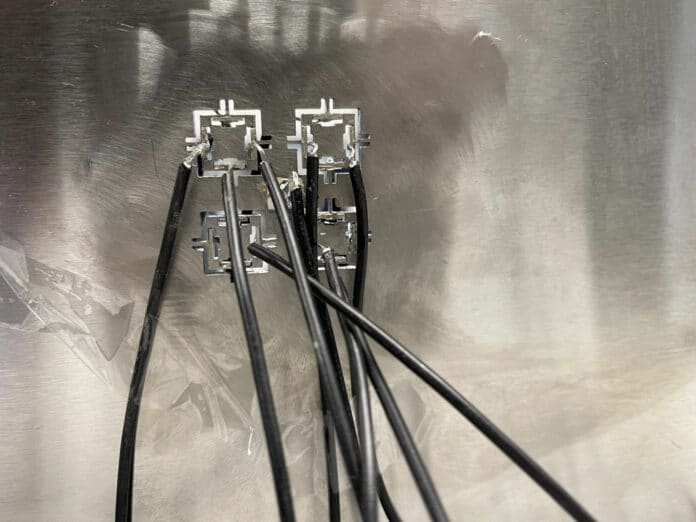The conventional mechanical metamaterials with inner resonators are characterized as homogenized solids with symmetric effective mass density tensors to interpret subwavelength wave attenuation mechanisms.
For more than 10 years, Guoliang Huang, the Huber and Helen Croft Chair in Engineering at the University of Missouri, has been investigating the unconventional properties of “metamaterials” to design an ideal metamaterial.
Now, Huang’s one step closer to his goal. In a new study, Huang and colleagues have a class of active metamaterial featured with an odd mass density tensor whose asymmetric part arises from active and nonconservative forces. This metamaterial uses electrical signals to control the direction and intensity of energy waves passing through a solid material.
Metamaterials with inner resonators connected via asymmetric and programmable feed-forward control on acceleration and active forces along the two perpendicular directions are used to realize the odd mass density—non-Hermiticity results from the active forces’ production of imbalanced off-diagonal mass density coupling terms. The odd mass is then empirically confirmed using a one-dimensional nonsymmetric wave coupling in which propagating longitudinal waves are coupled with transverse waves but not vice versa.
The two-dimensional active metamaterials with the odd mass can perform in either energy-unbroken or energy-broken phases separated by exceptional points along principal directions of the mass density. The odd mass density contributes to the wave anisotropy in the energy-unbroken phase and the directional wave energy gain in the energy-broken phase.
His creative idea could have military and commercial uses, such as managing vibration caused by air turbulence from an aircraft in flight or manipulating radar waves by instructing them to monitor a certain area for items.
Scientists also demonstrated two-dimensional wave propagation phenomena arising from the active solids’ odd mass.
Huang said, “This metamaterial has odd mass density. So, the force and acceleration are not going in the same direction, providing us with an unconventional way to customize the design of an object’s structural dynamics or properties to challenge Newton’s second law.”
“This is the first physical realization of odd mass density.”
“For instance, this metamaterial could be beneficial to monitor the health of civil structures such as bridges and pipelines as active transducers by helping identify any potential damage that might be hard to see with the human eye.”
Journal Reference:
- Qian Wu, Xianchen Xu et al. Active metamaterials for realizing odd mass density. PNAS. DOI: 10.1073/pnas.2209829120
